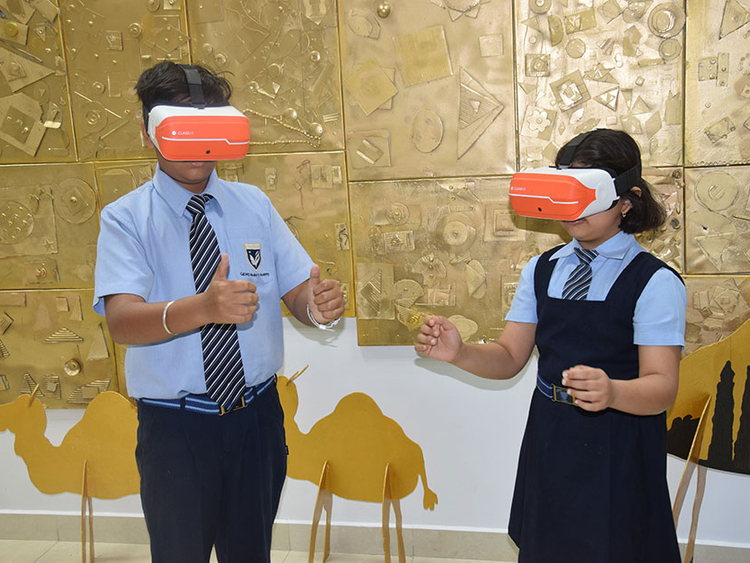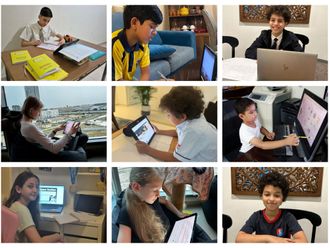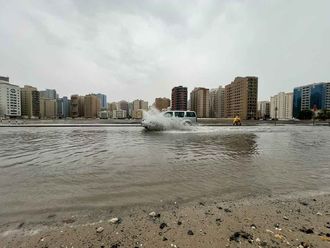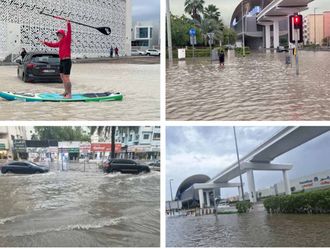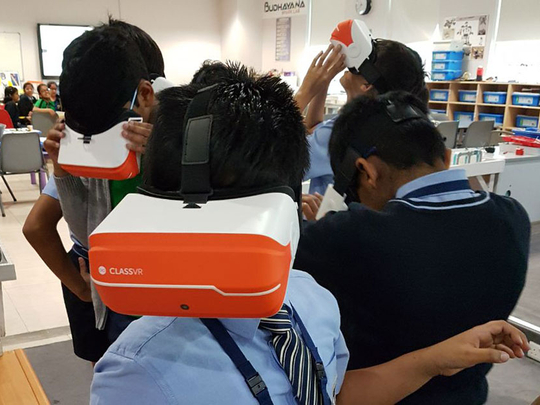
Step into the solar system or wade into the ocean, minus a snorkel. Heck, step onto the sun. Welcome to the classroom of now.
The UAE, famed for its ambition – and accomplishments – in being number one, has many virtual reality (VR) dabblers who are slowly ushering edutainment towards the immersive experience. Two schools pioneering this brand of teaching are GEMS Modern Academy – Dubai and Jumeirah English Speaking School, teachers of which call it “a powerful learning tool”.
“We basically identify topics which could need learning through VR experiences...It is always better to have them experience the environment than [look at] a picture…In subjects such as geography, history, science, literacy – that’s where we use VR a lot,” says Ritesh Dhanak, Supervisor-Digital Learning and Innovation, GEMS Modern Academy.
Ten-year-old Darian, from GEMS Education Modern Academy, says: “It is a nice experience; you can actually enter the world instead of the teacher just showing you something on the board and asking you to imagine [it]. With VR, you’ll be in the world before you [know it].”
But besides everyday subjects, there’s also a therapeutic benefit of the technology both in art and understanding. “Our SEND [Special Education Needs] department uses it a lot….they’ve been positively impacted by the use of VR. It's a grade four child who was having difficulty understanding the solar system in detail; but now, because of VR, he is able to play around with planets inside an immersive environment and he can experience what is around him,” says Dhanak.
Imagine this: you put your headset on and look below you – and there is only vast space. The Sun in front of you is draped in shades of red and yellow, and the earth is whizzing by. You can walk towards Pluto and physically follow its elliptical orbit, watch a star burn bright and dim, and there you are – body-less, weight-less – part of the solar system. Until the bell rings that is, and the headgear comes off.
What’s on the programme?
At Jess, “we are using apps like TimeLooper to allow students to travel through time and see historical events take place around them”, says Steve Bambury, Head of Digital Learning and Innovation. He adds that besides the obvious programmes, which allow field trips, there are irregulars. “We are piloting a programme called Immerse Me, with the languages department, which is allowing students within their French and Spanish classrooms to actually engage in a conversation with a virtual person,” he explains.
Bambury also talks about the concept of VR, saying most people are duped into thinking that it just means a 360-degree collated images experience. “True virtual reality is when you are stepping into a virtual space. At the moment, that kind of technology – like the Oculus Rift – is not readily available in stores. We are lucky that we live in Dubai and there are schools here that have started to kind of [experiment]…that type of technology will become prevalent in the next five to ten years, as the hardware requirements reduce and the price reduces.”
Both schools have a bank of devices that they use to curate the experience– with Jess also tapping (in secondary classes at least) the resources that come with students being allowed to carry their phones into the institute’s compound. But they say equipment has become much more economically viable. “In 2013, those [VR headsets] used to cost about Dh400-500; now they are costing around Dh20-30,” says Dhanak.
But it’s not all good news. Educators are well aware of the pitfalls that come with the tech – for one thing reality and virtual space may begin to mesh. “It’s something Steven Spielberg’s forthcoming thriller Ready Player One – a film [set] in the future one lives their entire lives in virtual reality, and he refers to it as the super-drug of the future. I think that will be something at the forefront as true VR begins to permeate everyday society, not just schools,” says Bambury.
For now, the conscious effort is to provide short, fun experiences. “We don’t start very early...it’s about the eye development of a child, so even the doctors say that near-sightedness may be a problem if you keep watching a lot of VR when you are very young. We do keep those things in mind and guide our student[s] accordingly….we want them to experience a topic related to a learning objective probably for five to seven minutes at any given point in time, this will probably change with more advancement in VR technology, with younger kids we use AR or augmented reality,” says Dhanak.
“We are always conscious of the fact that we are working with children,” adds Bambury. “We, for example, will not use the HTC Vive with the younger students, it might get too heavy, and we chose our hardware specifically based on [their] requirements.”
“There’s not an area that cannot be enriched with the use of virtual reality,” says Bambury. For now, it’s about waiting and watching and finding that fine balance.
Now then, ready for a quick trip to 1920’s Paris? It’s as easy as donning a headset.



